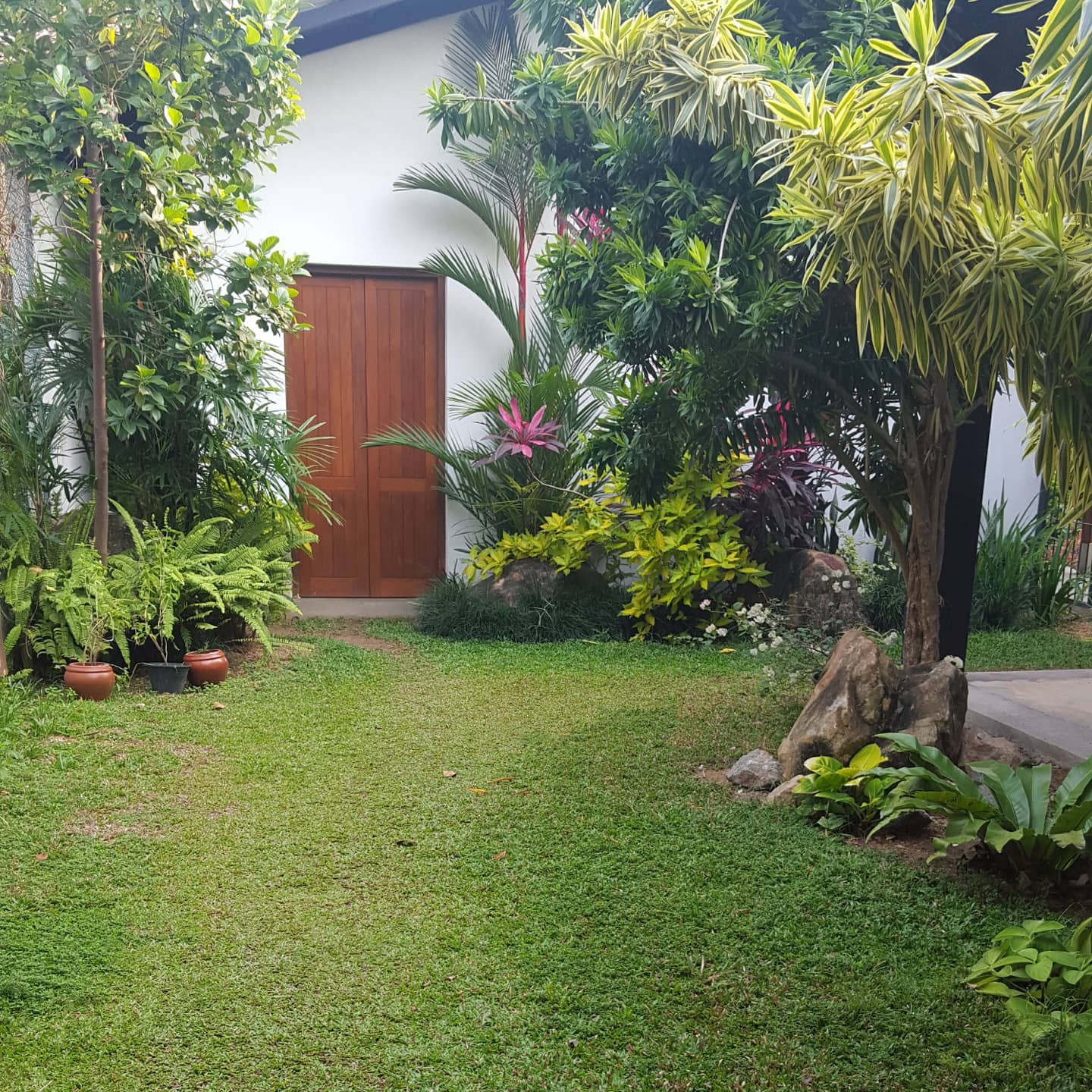
Our Sick Homes
BY RU’A AL-ABWEH, CASSIE HOEPRICH, AND AKANA JAYEWARDENE
June 15, 2021
In early 2020, the COVID-19 pandemic imposed a new reality upon us. For several months, we were in lockdown. We were forced to become intimate in whatever setting we found ourselves, and across the globe, millions became all too familiar with their cramped apartments, ghostly city blocks, and precious window views. Homesickness swelled, as did bizarre discoveries, in the places we were contained.
We depended on tangible portals (namely, digital ones) to experience our unreachable homes and walked through the abstract portal of forced adjustment, which led some of us to reimagine and revisit the notion of home.
Spliced together, this collective pondering revealed the transcendent nature of home.
Today, our upended realities persist, yet many of us have adapted. We have become accustomed to our sick homes. The ephemerality of the pandemic’s onset, those few months, were flush with sickness: in cities and towns around the world, we simultaneously reckoned with the idea of home. Our emotions straddled homesickness and fascination. We longed for movement and familiar forms of life in the places we watched rapidly transform, yet this monotonous existence enabled marvel with commonplace phenomena.
In June 2020, dozens of friends around the world documented their sick homes by recording sounds in their households and around their neighborhood, or by soliciting sounds from people in the places they missed dearly. Together, the sounds of home forged portals, like a dynamic journal.
Today, these audio collages pull us back into individual and collective moments of longing for – and exploring – home.
“I AM HOMESICK.”: Nostalgia for the Familiar and Distant
Sound has the uncanny ability to open portals. Whether a song we take comfort in when first heartbroken, or the sound of a mother’s anklets in the late afternoon, sounds can evoke memory and transport us to a different time and place. Sounds can also conjure home; the sound of a vendor announcing fresh greens for sale at 9 am every morning or a grandmother yelling across the garden inviting us to tea can bring a place far away right before us in a matter of moments.
This compilation is composed of sounds from people coping with their homesickness across the world. These are their sounds of home that conjure nostalgia, yet also soothe. Nostalgia often occurs in waves, catching us off guard and often without warning. This sound collage is sequenced in a similar fashion, where sounds occur in waves, sometimes seamlessly melding together and at other times in juxtaposition with one another.
Audio: Nostalgia for the Familiar and Distant
“WHOA, THIS IS SICK.”: [Re] Discovering Home
In the early days of the pandemic, unremarkable moments warranted investigation. In some cases, this curiosity fed our loneliness and quelled disorientation. It also revealed beauty and questionable realities about the place we call home.
Buildings burned in Minneapolis as the uprising for Black lives surged. Sirens marked the curfew for the day in Amman. The crunch of gravel beneath our feet meant a moment outside and relief from the animosity we held towards the rooms and roofs that kept us safe from sickness but away from the lives we used to live.
Audio: [Re]Discovering Home
AUDIO AND PHOTOGRAPHY ARCHIVE
Audio: Including the names of the audio contributors and their locale
Ru’a Al-Abweh is a third-culture-kid (TCK) and considers herself a hybrid community organizer, placemaker, and designer of strategies, tools, and conditions. She seeks to enable people to determine the vision for their “home”, share their stories, and lead on pursuing change and justice, as she attempted to do in the border town of Azraq and Azraq refugee camp in Jordan, San Francisco’s Civic Center, and Seattle’s Tent City 3 (a community for the unhoused). She is currently the Head of Solutions Mapping at the UNDP Accelerator Lab in Jordan, holds a Master of Urban Planning from the University of Washington (specialized in Community Based Public Space Planning and Design for Global Challenges) and completed executive education programs on community organizing and public narrative through the Harvard Kennedy School.
Cassie Hoeprich recently completed her Master of Urban and Regional Planning at the University of California, Los Angeles, where she continues to serve as a Research Associate for cityLAB. Her studies at UCLA and Capstone project focused on how warped land governance structures, defunct government policies, and fraught urban design perpetuate wealth disparities, systemic racism, and “uneven development” throughout cities across North America. Her work has and continues to span California, including five years with the City of San Francisco in the Mayor’s Office, Planning Department, and Office of Economic and Workforce Development.
Akana Jayewardene is pursuing a Master in Architecture and Urban Design at the University of California, Los Angeles and serves as the Graduate Fellow for cityLAB, an urban design research lab at UCLA. She grew up in Colombo, Sri Lanka, and has moved back and forth between California and her hometown for years. As the first to pursue a BA in her family (BA – Architecture and Community Design at the University of San Francisco), Akana is interested in the role that architecture and urban planning play in equipping cities to accommodate the ever increasing influx of immigrants and in facilitating the crucial human need to placemake.